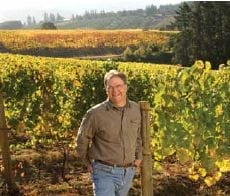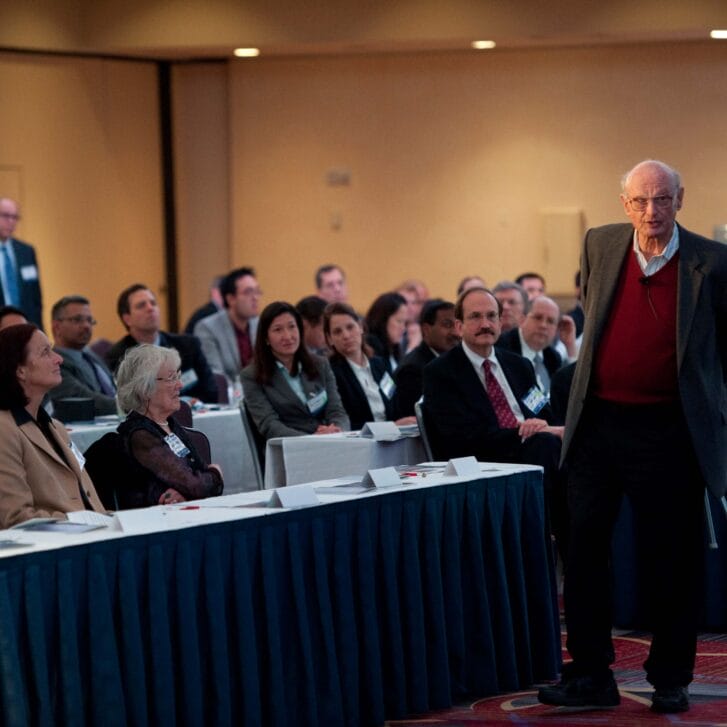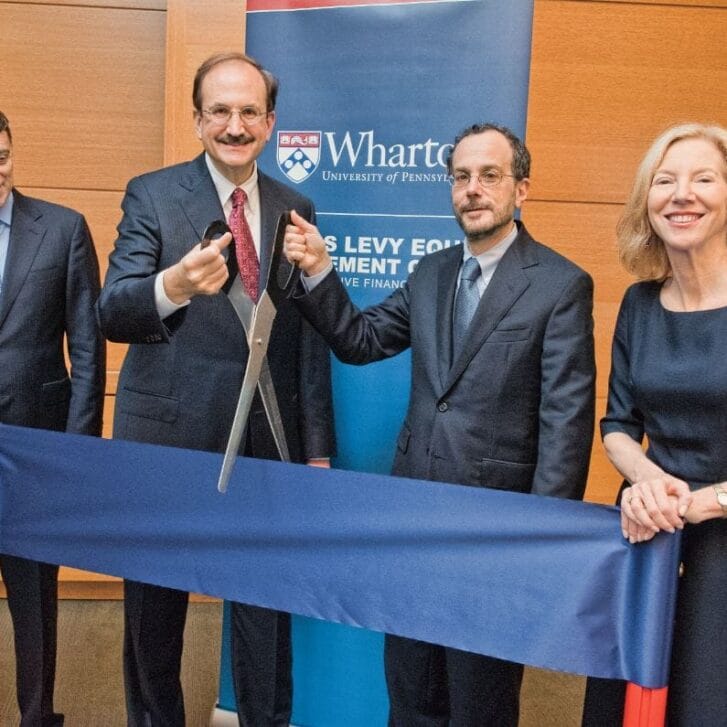“It’s often portrayed as being a high-pressure environment,” says Shea, WG’72. “I found it to be a whole lot of fun.”
In fact, looking back on his long and successful career on the Street — a career that saw Shea eventually rise all the way to Senior Vice President at the private investment bank Dillon Read & Co. — the only thing Shea regrets is that he spent all of those years indoors.
So now, he’s making up for lost time.
“This is such a great counterpoint to Wall Street, having been somebody who worked in those canyons for so long,” says Shea, who left Wall Street in 1999 to manage his Oregon vineyard full-time. “I changed from 25 years of doing that to really being outdoors all the time. The only time I’m not outdoors is when I’m working down in the cellar with the wine. I loved Wall Street when I was doing it, but this is a great second career.”
Just like his first career, Shea’s second is proving to be a successful one.
Shea and his wife, Deirdre, have built Shea Vineyard into one of the finest in all of Oregon. The 200-acre vineyard produces both Chardonnay and Pinot Noir grapes, supplying Shea’s own Shea Wine Cellars as well as such top Oregon makers as Beaux Frères and Ken Wright Cellars.
Twenty-eight of the 37 Shea-produced pinot noirs reviewed by Wine Spectator magazine scored 90 points or higher on the magazine’s 100-point scale.
That’s no accident, according to Shea.
Though he’s a winemaker now, Shea remains a businessman at heart. And he says he realized early on that in the crowded wine industry, the only way to thrive is to produce a truly phenomenal product.
“You have to make really superb wines if you want to make money,” Shea says. “And if you’re not making really superb wines, you’re probably not going to be making wine for much longer.”
As the Wine Spectator ratings attest, Shea is clearly achieving superb results. But the relatively quick success of the vineyard is especially impressive given that when Shea first bought the land, he didn’t have a solid idea of what he was going to do with it.
At the time, he had no designs on actually leaving Wall Street and certainly didn’t seem himself as a farmer. Besides, he grew up in Queens. “There aren’t a lot of Queens people who end up in farming,” he says.
To hear Shea tell it, he was merely a novice wine lover who, after tasting an Oregon pinot noir at a high-end Manhattan wine shop, grew intensely curious about Oregon wines.
“I wanted to find out more about it,” Shea recalls. “So I got on a plane and checked out [some land]. As I looked at it more, I really thought it would be a great investment — not a career thing, just an investment.”
He purchased the 200 acres of what is now Shea Vineyards in 1989 for $3,000 an acre. The first vines were planted in 1989, and, by 1994, Shea — still working full-time in New York — was selling his grapes to respected Oregon winemaker Ken Wright. Wright’s endorsement carried weight; before long, Shea was also supplying more than a dozen wineries.
But even as the demand for his grapes was taking off, Shea was thinking long-term. He decreed that Shea Vineyard would not be just another vineyard. It would be the best vineyard.
It was this vision, says Shea winemaker Drew Voit, that ultimately
propelled Shea Vineyard to its position today at the very forefront of American winemaking.
“The real distinction between Dick and some of the other [owners] was that, relatively early on, he decided to work exclusively with people who were extremely high-quality minded,” Voit says. “He sold to people based on their doing work that would reflect well on the vineyard. They pay a fair price but it’s about quality-minded winemakers, and when the quality is not there, Dick does what needs to be done to make changes.”
That was especially true in 1999, when, after a decade of remotely managing his vineyard, Shea made the biggest of changes, deciding the time had come for him to leave New York and move to Oregon. He saw an opportunity to make his own wine, rather than just selling his grapes to others, and wanted to be there to oversee the process.
As with most things he’s tried, Shea has met with success there, too. His winery is now pumping out about 5,500 sought-after cases a year.
While that’s not a lot by industry standards, Shea believes the quality of the wine, like that of his grapes, speaks for itself.
“At my age, I’m not looking to build some kind of wine empire,” he says. “I’m here to make wonderful wine and enjoy every day doing it. That’s the nice place we’re in right now. We don’t need to get any bigger.”

























